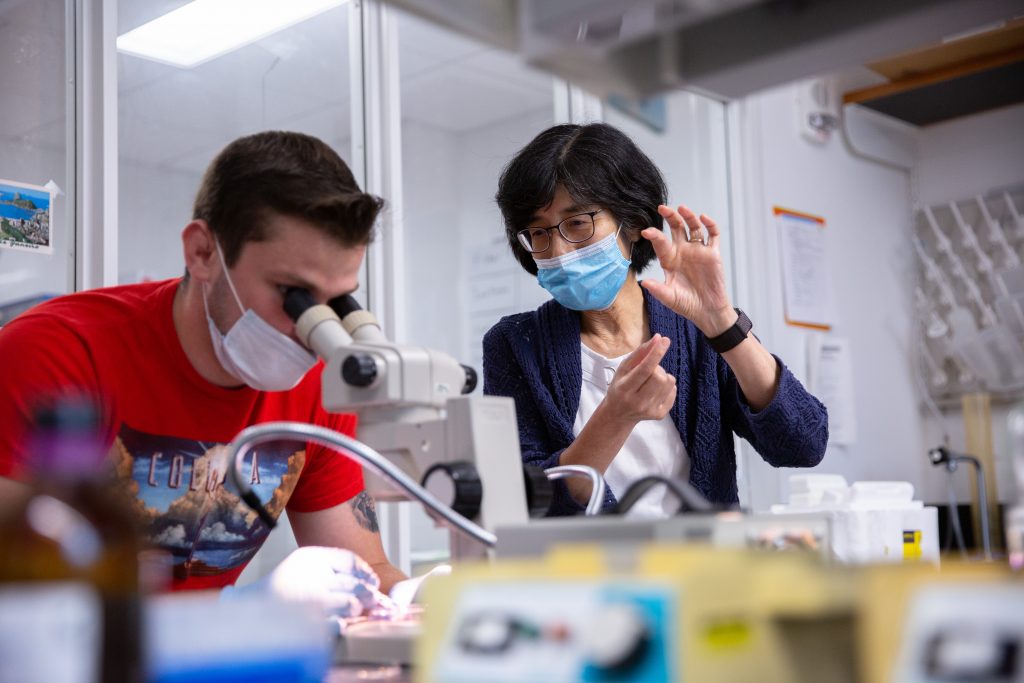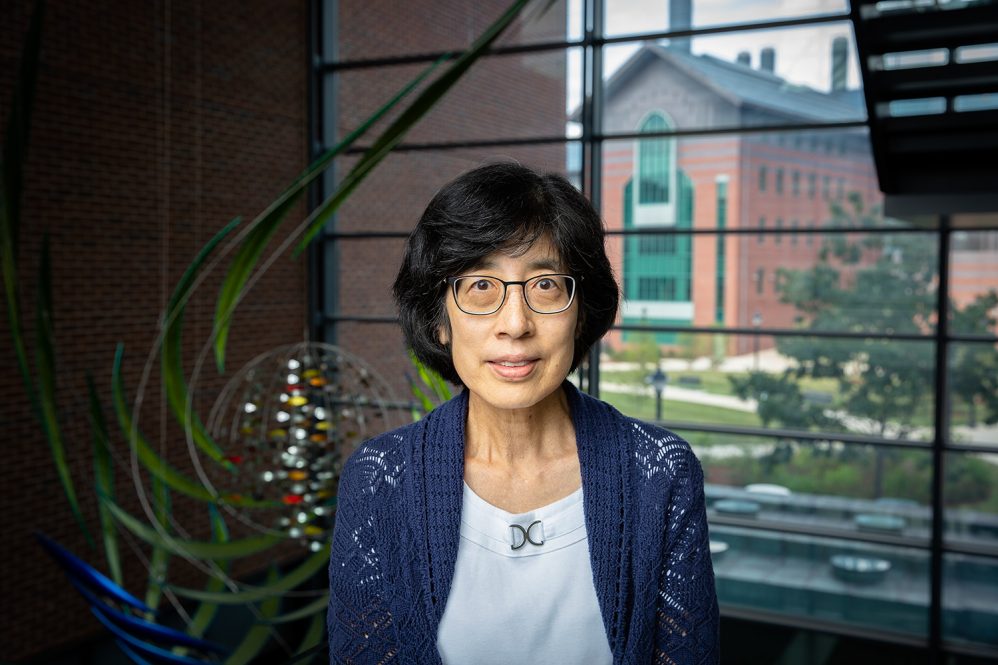Forty years ago, neurologists and neurobiologists believed that the adult brain became less plastic and less able to learn and retain new things. They had no idea that non-neuronal cells had anything to do with information processing in the brain, including learning and memory.
Now, after decades of researching and characterizing a particular cell type, called glial cells, in the brain, Akiko Nishiyama, professor of physiology and neurobiology and the new department head, can tell you that these cells are essential to enabling humans to learn new tasks well into adulthood, thanks to a very dynamic regulation of the ability of oligodendrocyte precursor cells she had found to generate mature myelin-forming cells. She believes that these cells also play a yet unidentified critical role in the network of brain activity.
We sat down with Nishiyama to talk about her goals for the department and current trends in the growing field of physiology and neurobiology.
What is the physiology and neurobiology (PNB) major at UConn?
Physiology is the study of how different parts of the body work, and neurobiology is the study of how the nervous system (brain, spinal cord, and peripheral nerves) works, and this is what I study. The PNB department is where faculty and students study both disciplines.
In the early- to mid-20th Century, we saw a tremendous expansion of the study of the nervous system, which led to the emergence of a multi-disciplinary field called neurobiology. The name of our department reflects this transition.
How did you get started in neurobiology? Tell us about your research.
I started my career in neuropathology after finishing six years of medical training. I was curious about how different cells in the nervous system support the function of neurons and how these support cells, known as glial cells, might malfunction in the process of neurodegenerative diseases. Halfway through the residency-doctoral program, I switched to a more basic doctoral program in molecular neurobiology, because I wanted to ask fundamental molecular and cellular questions about how different glial cells in the nervous system interact with neurons.
I sought my postdoctoral training in a lab studying the NG2 protein that seemed to be present in a yet-unidentified subset of glia, and I spent my career characterizing them.
Thirty years later, these cells have become widely known to cellular neurobiologists and have made it into textbooks. My studies established that NG2 cells are precursor cells to oligodendrocytes that make myelin sheaths but are different from stem cells or other known glial cell types.
Now we know these myelin structures are constantly being remodeled as we learn new skills as adults. And if you disrupt the process of the precursor cells, you disrupt the ability to acquire new tasks or learn new motor skills.

Why are these cells important?
We used to think that myelin was formed during the few years after birth and remained stable throughout life. What I found was that oligodendrocyte precursor cells persist in the adult brain and are implicated in some neurological disorders, such as multiple sclerosis.
This is an expanding area of research in a new field called myelin plasticity. Myelin repair is important for the functional repair not only in multiple sclerosis but also after trauma such as spinal cord injury. New genomic studies are emerging that have linked oligodendrocytes to neuropsychiatric and neurodegenerative diseases such as schizophrenia and Parkinson’s disease.
What are some of the things you can do with a degree in PNB?
We provide a wide-ranging set of skills, collectively, in the department, because the possibilities grow every day.
Many of our undergraduate students pursue medical, dental, or other health care professions. For instance, we recently developed the Interoperative Neuromonitoring Program with a master’s degree in Surgical Neurophysiology. This program trains specialized medical technologists who monitor the patient’s muscle and brain activity and other neurophysiological indicators during surgery that may be important for surgeons and anesthesiologists to see in real-time.
Some PNB majors go to graduate school to pursue a career in academic or industry research. In addition, students with an advanced degree in physiology and neurobiology can become teachers or science writers.
Regardless of whether they are pursuing research, we train our undergraduate students to develop a good habit of identifying and thinking through a problem. We have faculty with diverse expertise, and our students are introduced to a wide range of questions and approaches to answer them in the classroom as well as in faculty laboratories.
What are some of your goals for the department over the next five years?
I’m really lucky to have a strong and friendly department. It’s a small enough department that I can get to know each faculty and staff member quite well.
I would like to better connect with our undergraduate majors early during their time at UConn. Currently, we see them for the first time when they take our gateway Human Physiology and Anatomy course in their sophomore year, and most of our faculty do not see them until they are juniors or seniors. I am interested in exposing freshmen and early sophomores to more experiential types of learning, monitoring their progress, and providing feedback and support where needed.
One of the strengths of our department is our faculty’s research. Many of our faculty, especially the younger faculty, have expanding research programs, have been successful in securing large external grants, and are active in mentoring graduate and undergraduate students in their labs. I would like to provide an environment where the successful faculty can attain an even greater level of excellence and as a department attract a larger number of talented doctoral and postdoctoral trainees to UConn.
I would like to strengthen our graduate program to provide more multidisciplinary training for the next generation of physiologists and neurobiologists to gain quantitative and computer skills as well.



